When it comes to camping, one of the most essential items is a tent. It provides shelter and protection from the elements, allowing us to enjoy the great outdoors while still having a comfortable place to sleep at night. However, just like any other personal space, security is also important. Whether you’re in an area with wildlife or concerned about potential intruders, knowing how to lock your tent from the inside can give you peace of mind and help keep you and your belongings safe.
Types of Tent Locks
There are several types of tent locks available in the market, and choosing the right one depends on your needs and preferences. Below are some common types of tent locks:
- Zipper Locks – These small, ingenious devices provide an extra layer of security for your tent. Designed to fit over the zipper pulls of your tent’s door, they effectively prevent anyone from opening it from the outside, giving you peace of mind and ensuring a safe and undisturbed sleep.
- Combination Locks – Similar to a bike lock, these locks offer a reliable and customizable solution for safeguarding your tent. With a specific combination of numbers or symbols required to open them, they provide an added level of protection, deterring unauthorized access and ensuring the security of your belongings.
- Padlocks – For a more traditional approach, padlocks are a tried-and-true option for securing your tent. These versatile locks can be easily attached to loops or zippers on your tent, providing a sturdy and dependable barrier against potential intruders. With their robust design and ease of use, padlocks offer a reliable way to keep your tent and belongings safe during your outdoor adventures.
- Cable Locks – If you’re looking for versatility and flexibility in securing your tent, a cable lock is an excellent choice. With its long, durable cable, this type of lock can secure multiple zippers or even be used to tie down your entire tent. Whether you’re camping in a crowded campground or setting up camp in a remote location, a cable lock provides an adaptable solution to keep your tent secure in various situations.
- Door Alarms – When it comes to ensuring your safety and peace of mind, door alarms are a valuable addition to your camping gear. These alarms utilize motion sensors and emit loud sounds to alert you of any potential intruders, giving you an early warning and allowing you to take necessary precautions. With their reliable detection capabilities and attention-grabbing alerts, door alarms provide an extra layer of security, enabling you to enjoy your camping experience with greater confidence.[1]
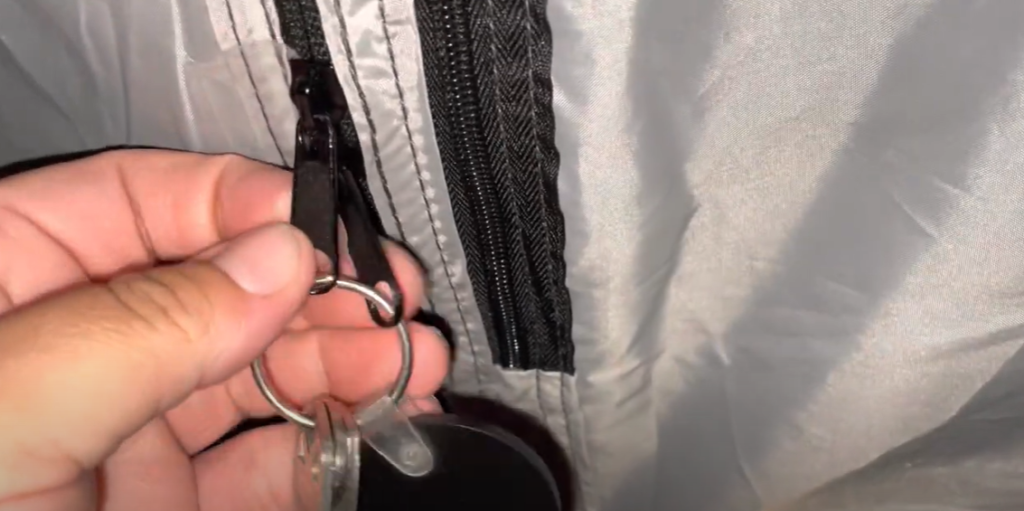
Built-in Tent Locks
Explanation of tents with integrated locking systems.
Aside from external locks, there are also tents that come with their own built-in locking systems. These integrated locks are typically found in higher-end and specialized camping tents, providing an all-in-one solution for securing your shelter while outdoors.
Another type of built-in tent lock is the gear loft lock. This type of lock is designed to secure your belongings inside the tent, such as electronics, food, or valuables. It typically consists of a small combination lock attached to a gear loft, which can be hung from the tent’s ceiling. This provides an added layer of security for your personal items and peace of mind while you’re away from your campsite.[3]
Pros and cons of built-in locks.
There are several advantages and disadvantages to using built-in tent locks. Some pros include:
- Convenience: Built-in locks eliminate the need for carrying extra lock equipment, making it easier to pack and set up your tent.
- Added security: Having a dedicated locking system integrated into your tent adds an extra layer of protection for you and your belongings.
- Customizable: Many built-in locks allow for customization, such as choosing a specific code or customizing the gear loft lock to fit your needs.
However, there are also some cons to consider:
- Cost: Tents with built-in locking systems tend to be more expensive than traditional tents without this feature.
- Limitations: Built-in locks may not be as versatile as external locks, limiting your options for securing your tent in different situations.[3]
Examples of tents with built-in locks.
- The Big Agnes Copper Spur HV UL2 Tent – This lightweight and spacious tent feature a built-in combination lock on the door, providing added security for solo campers or those looking for a convenient all-in-one solution.
- The Coleman Tenaya Lake Fast Pitch 8-Person Cabin Tent – This family-sized tent comes with an integrated gear loft lock, giving you peace of mind while you’re away from your campsite.
- The ALPS Mountaineering Lynx 1-Person Tent – This single-person tent includes a built-in gear loft with a combination lock, perfect for solo adventures where security is paramount.[3]
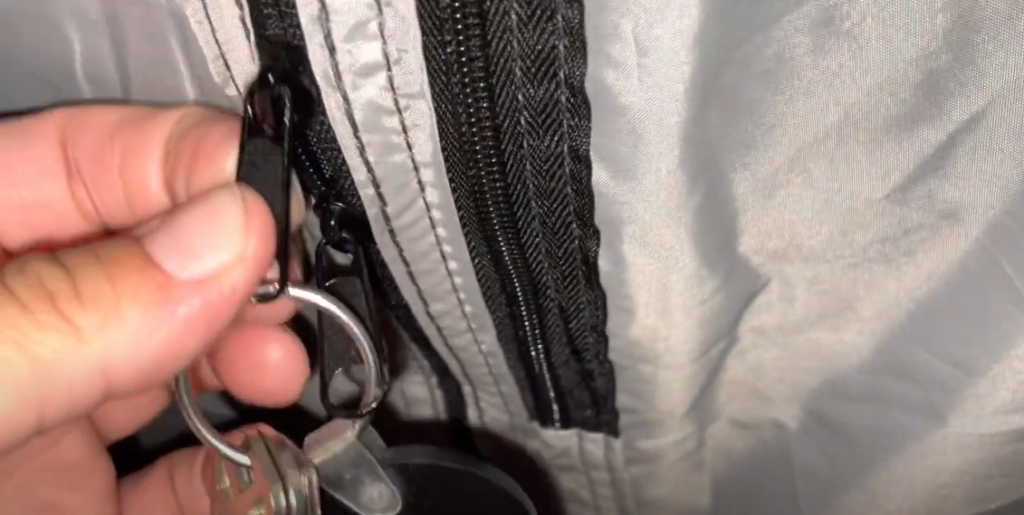
External Tent Locks
Overview of external locking solutions for tents.
While built-in tent locks offer convenience and added security, external locking solutions offer more versatility in securing your tent. These types of locks can be used on any type of tent, making them a popular choice among campers.
Another popular type of external lock is the carabiner lock. This type of lock involves using a carabiner (a metal loop with a spring-loaded gate) to fasten zippers or loops on your tent. It offers a simple and lightweight solution for securing your tent, and the carabiner can also be used for other purposes, such as hanging gear or creating a clothesline.[2]
Padlocks, combination locks, and other alternatives.
In addition to TSA-approved locks and carabiner locks, there are several other external locking options for tents. These include:
- Padlocks: As mentioned earlier, padlocks are a classic and reliable choice for securing your tent. They offer a sturdy barrier against potential intruders and can be easily attached to loops or zippers on your tent.
- Combination locks: Similar to built-in combination locks, external combination locks require a specific code to open and close. They come in various sizes and can be used on different types of tent closures.
- Zipper pulls: These small but handy accessories can be attached to zipper tabs on your tent, making it more difficult for someone to unzip without your knowledge.
- Tent alarms: For an added layer of protection, you can also consider using tent alarms. These small devices emit loud sounds when triggered, alerting you and nearby campers of any potential intruders.[2]
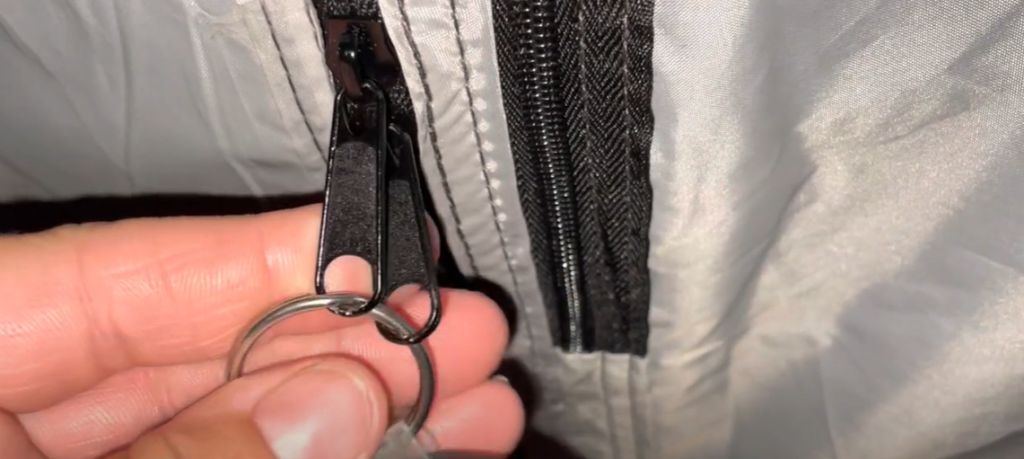
Considerations for choosing an external lock.
When choosing an external lock for your tent, there are a few things to consider:
- Durability: Look for locks made from sturdy materials that can withstand outdoor conditions.
- Compatibility: Make sure the lock you choose can be easily attached to your tent’s closures or zipper loops.
- Portability: If you plan on carrying your lock with you while hiking or exploring, consider its weight and size.
- Security level: Consider the level of security you need for your tent. For example, a padlock may offer more protection than a simple zipper pull.[2]
DIY Tent Locking Solutions
If you don’t want to invest in a built-in or external lock for your tent, there are some simple and effective DIY solutions you can try. These include:
- Using a rope: You can tie a rope around the zippers or loops on your tent and secure it with a knot to prevent unauthorized access.
- Utilizing a luggage strap: Similar to the rope method, you can wrap a luggage strap around your tent and secure it using its own locking mechanism.
- Using a carabiner and keychain: Attach a small carabiner to your tent’s zipper loop and then attach a keychain to the carabiner. This creates an added layer of protection as someone would have to remove both the carabiner and keychain to unzip your tent.
- Creating a makeshift latch: If your tent has two zipper pulls, you can create a makeshift latch by looping one pull through the other and securing it with a small lock or zip tie.[1]
Regardless of which locking solution you choose, make sure to test it before using it on your trip. And always remember to properly secure your tent when leaving it unattended, for added protection and peace of mind.
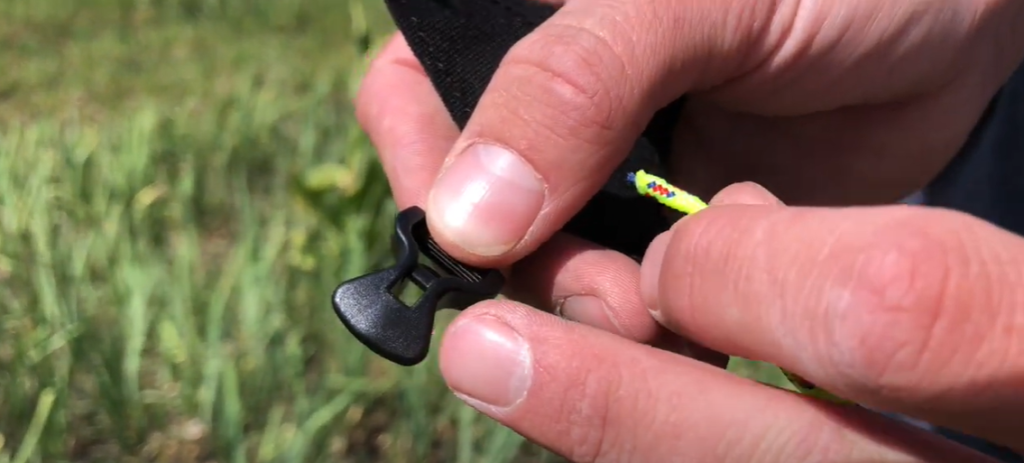
Security Tips for Camping
In addition to utilizing tent locks, there are some other security tips you should keep in mind while camping:
- Choose your campsite carefully: When setting up your tent, choose a spot that is well-lit and has good visibility. Avoid secluded areas where it may be easier for someone to approach without being noticed.
- Keep valuable items out of sight: Don’t leave expensive gear or valuables in plain sight inside your tent. Instead, store them in a locked car or keep them with you.
- Stay aware of your surroundings: Be mindful of any suspicious activity in your campsite and trust your instincts if something doesn’t feel right.
- Have a plan in case of emergency: In case of an emergency, make sure you have a way to quickly exit your tent. This could mean leaving a zipper slightly open or having a backup key for any locks.[1]
By following these tips and utilizing tent locks, you can minimize the risk of theft or intrusion while camping and enjoy your trip with peace of mind.
Common Mistakes to Avoid
While locking your tent is important for security, there are some common mistakes that campers make when it comes to tent locks. These include:
- Not testing the lock beforehand: It’s important to test your lock before using it on your trip to ensure it works properly and you know how to operate it.
- Forgetting the combination or key: If you choose a combination lock, make sure to write down the code in a safe place or remember it. The same goes for any keys you may need to use.
- Using an easily breakable lock: Avoid using cheap or flimsy locks that can be easily broken by potential intruders.
- Not properly securing all tent openings: Make sure to secure all closures on your tent, including windows and vents, to prevent any unwanted entry.[1]
By being aware of these common mistakes, you can avoid them and ensure your tent is properly secured while camping.
Legal and Ethical Considerations
While the use of tent locks can provide added security for campers, it’s important to note that these measures are not always foolproof. In some cases, an intruder may still be able to access your tent even with a lock in place.
Ultimately, the decision to use a tent lock is a personal one and should be based on your own comfort level and assessment of potential risks. By considering all factors and taking proper precautions, you can enjoy a safe and secure camping experience.[1]
FAQ
How do you lock down a tent?
To lock down a tent, you can use built-in locks or external locks such as zipper pulls, tent alarms, or padlocks. You can also create DIY locking solutions using items like rope, luggage straps, and carabiners. Just make sure to properly secure all tent closures and test the lock beforehand. Additionally, it’s important to choose your campsite carefully and take other security measures to ensure a safe camping experience.
Do they make tents that lock?
Yes, some tents come with built-in locks or offer the option to add a lock. However, if your tent does not have a built-in lock, you can still use external locks for added security. It’s important to research and choose a tent that fits your specific needs, including any desired locking features. So whether you prefer a traditional tent or one with more advanced security features, there are options available to suit your needs.
How do you prevent tent theft?
Preventing tent theft involves taking various security measures, such as using locks on all tent closures and keeping valuable items out of sight. Additionally, choosing a well-lit and visible campsite, staying aware of your surroundings, and having a plan in case of emergency can also help prevent theft. Ultimately, being mindful and taking proper precautions can greatly reduce the risk of tent theft.
What are 4 ways to prevent theft?
- Use locks and security devices: This includes using locks on tent closures, securing valuable items in locked cars or with you, and utilizing other security devices such as alarms.
- Choose a secure location: When setting up your campsite, choose a spot that is well-lit and has good visibility. Avoid secluded areas where it may be easier for thieves to approach undetected.
- Stay aware of your surroundings: Be vigilant and trust your instincts if something seems off or suspicious. Keep an eye on any potential threats in your campsite.
- Have a plan in case of emergency: In case of an emergency, make sure you have a way to quickly exit your tent and seek help if needed. This could mean leaving a zipper slightly open or having a backup key for any locks.
How do you secure a party tent?
To secure a party tent, you can use some of the same measures mentioned for traditional tents, such as using locks on all closures and keeping valuable items out of sight. However, if you are hosting an event in a rented or temporary party tent, it’s important to also consider proper anchoring and weight distribution to prevent the tent from toppling over in case of strong winds or other weather conditions. It may be helpful to consult with the tent rental company for specific guidelines and recommendations.
Useful Video: How To Lock Tent From Inside for Free
Conclusion
Camping can be a fun and enjoyable experience, but it’s important to take necessary precautions to ensure your safety and security. Using tent locks is one way to add an extra layer of protection for you and your belongings while camping. By being aware of common mistakes, legal and ethical considerations, and taking other security measures, you can minimize the risk of theft or intrusion while camping and have a worry-free trip. Remember to always test your lock beforehand, choose a secure location, and stay alert for any potential threats. Happy camping!
References:
- https://thetruewilderness.com/lock-tent-from-inside/
- https://adventuregearinsider.com/how-to-lock-a-tent/
- https://www.outdoorworlddirect.co.uk/knowledge/tents/how-to-lock-a-tent.html

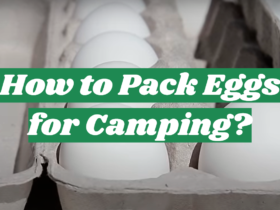


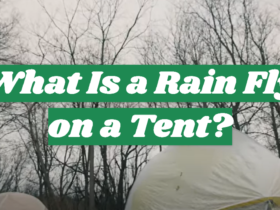
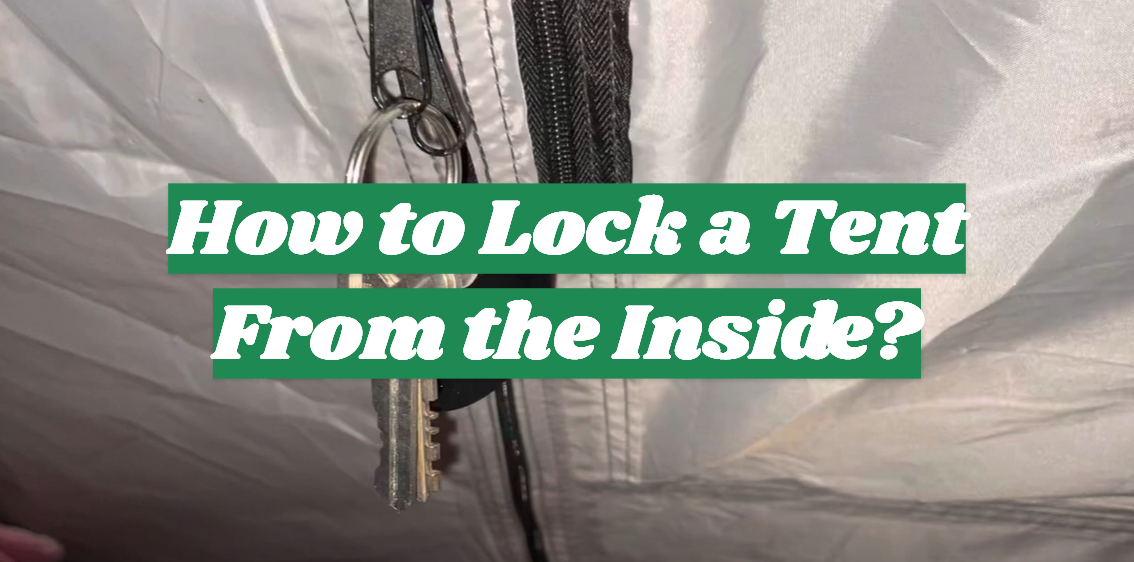
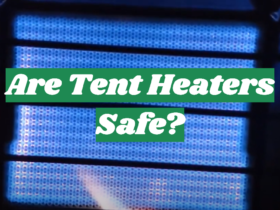
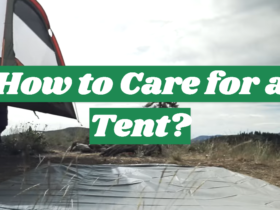

Leave a Review